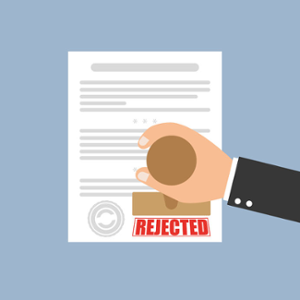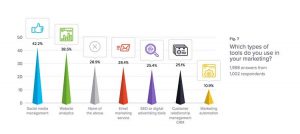I’ve been noticing a trend among TV watchers (at least in my own TV watching habits): The “second screen” (i.e. my mobile device) is starting to get more of my attention during first screen viewing (i.e. TV watching). Even if a show has my attention from the start, all it takes is a text, an email or a Facebook post from a friend to divert my attention away from the TV for the remainder of the show. I know I’m not alone in this behavior because I see my friends and family fall victim to this every time the TV turns on.
So why are television marketers still pushing viewers to their mobile devices?
It seems counterproductive to be constantly pushing viewers to their mobile devices during show broadcasts. It’s true that promoting social media channels and online show-related content can create a more dedicated fan. But a promoted hashtag that pushed viewers to Twitter could end up losing viewers as they get absorbed in the thousands of other conversations and tweets happening at the same time.
So how can TV marketers promote their social media channels and engage audiences without losing viewers in the process? The solution is a theory I call The Second Screen Push/Pull Dance.
The Second Screen Push/Pull Dance:
Pushing viewers to their mobile device (second screen)
– Promote the website
- Create episode-specific content that allows users to engage even more with the show
- NOTE: Be sure to have that remarketing pixel in place on the website
- Create an incentive program that requires an email sign up to gain access to exclusive content
- NOTE: That email address can be of value down the road
– Promote Facebook page
- Post questions about the episode to engage the audience
- Promote show-specific content via Facebook that drives viewers to show-specific content on the network website
- NOTE: More site traffic = larger remarketing pool
– Promote Twitter page (Official show page / show star pages)
- Live tweet during the show
- Utilize hashtags to engage users
- Promote show-specific content via Twitter that drives viewers to show-specific content on the network website
– Promote YouTube channel
- Have exclusive content that’s only on YouTube
Pushing viewers back to the TV (primary screen)
– Live Facebook posting and tweeting with specific posts notifying followers when the show is back on
- For those who get lost in other Facebook and Twitter content
– Facebook and Twitter ad campaigns that are active specifically when the show is on (and specifically promote that the show is on NOW!)
- For those who may not be following show-specific profiles
– Remarketing campaigns for specific shows on the days they broadcast
- For those who wander off onto other websites
– Email marketing campaign that sends reminder emails halfway during a show’s broadcast to remind fans the show is still on
- For those who get lost in their emails
– YouTube Pre-roll video ads on other channels promoting the show is on NOW!
- For those who may be watching other online content
As you can see, this dance is a lot of work and requires a delicate balance (you don’t want to overwhelm fans with messages). It’s also just a theory at this point (I haven’t personally executed on this strategy). But if TV networks don’t have a tactic to pull people away from their mobile devices during prime time, Prime Time TV could become a thing of the past.
Business Articles | Business 2 Community
(316)






